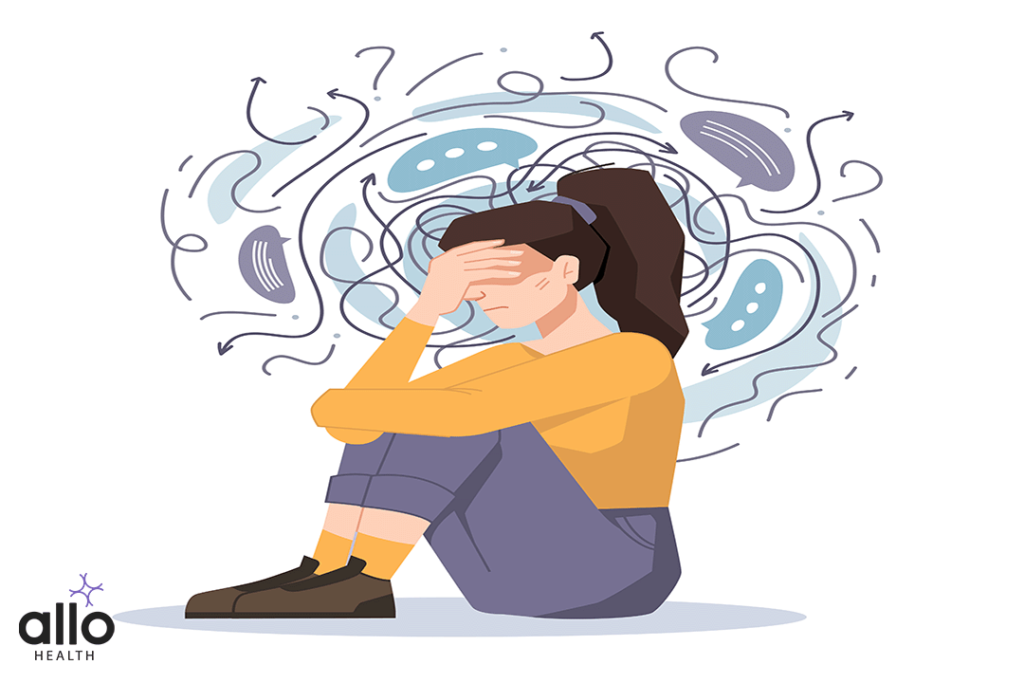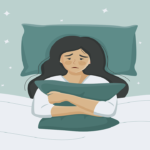Anorgasmia: What You Need To Know

Allo Health is dedicated to personalized well-being, offering support and trusted information tailored to individual health goals. The platform emphasizes human-generated content, led by a distinguished medical team of experts, including physicians and sexual health specialists. Their commitment to credibility involves rigorous fact-checking, authoritative research, and continuous updates to ensure accurate, up-to-date information. Allo Health's unique approach goes beyond conventional platforms, providing expert-led insights and a continuous commitment to excellence, with user feedback playing a crucial role in shaping the platform's authoritative voice.

A Psychotherapist with Clinical specialization, working for over seven years now. Areas of specialization range from Anxiety-related disorders, Mood-related disorders, Personality disorders, Sexual dysfunctions & other mental health issues.
Why This Was Upated?
Our experts continually monitor the health and wellness space, and we update our articles when new information became available.
Updated on 23 May, 2024
- Article was updated as part of our commitment to diversity, equity, and inclusion.

"The following blog article provides general information and insights on various topics. However, it is important to note that the information presented is not intended as professional advice in any specific field or area. The content of this blog is for general educational and informational purposes only.
Book consultation
The content should not be interpreted as endorsement, recommendation, or guarantee of any product, service, or information mentioned. Readers are solely responsible for the decisions and actions they take based on the information provided in this blog. It is essential to exercise individual judgment, critical thinking, and personal responsibility when applying or implementing any information or suggestions discussed in the blog."
“Did you just say orgasm?” – is usually the first reaction people have when someone initiates a conversation about concerns that a female might be facing or mere confusion that might exist around her sexual intercourse. And most likely, the stigma around female pleasure and sexual health is contributing to delayed diagnosis of conditions like Anorgasmia.
But you must be wondering, what exactly do we mean by it, and how do we know if we’re suffering from it? So, let’s break the entire topic into sections so you have the correct information about your sexual health.
What is Anorgasmia?
The condition where a male or female experience persistent or a recurring delay or absence of orgasm or has difficulty reaching that stage despite a lot of sexual stimulation is called anorgasmia. This orgasmic disorder is diagnosed when the person has had adequate sexual stimulation and has been intimate with her partner but can still not experience orgasm. This can have a variety of causes, including psychological factors, physical conditions, and medication side effects.
However, actually finding out whether the person is suffering from anorgasmia or if there is any other reason involved can be a little tricky task. Why? Because orgasms are highly subjective and do not have a fixed duration or intensity to be compared. It can vary from individual to individual; sometimes, the same person can even experience it within a few minutes, and sometimes it might take much longer.
So, now the obvious question that would follow is –
How Does One Know That They Have An Orgasmic Disorder?
The most obvious symptom would be being unable to achieve an orgasm despite the sexual build-up between the two partners. However, having a significantly noticeable delay in reaching that stage can also be another alarming symptom to eye for.
Anorgasmia, as previously mentioned, is the inability to reach or lack of orgasm during sexual activity despite sufficient sexual stimulation. Symptoms of this can include:
- Inability to reach orgasm
- Difficulties with orgasm or delayed orgasm
- Lack of sexual pleasure or satisfaction
- Lack of sexual desire
- Inability to achieve sexual arousal
- Inability to relax and enjoy sexual activity
- Feelings of frustration or stress related to sexual activity
- Difficulty achieving or maintaining an erection (in men)
Types Of Anorgasmia
Mostly, anorgasmia is of many types based on the intensity, frequency and situational factors that might play a significant role. But, the four main categories are-
- Primary anorgasmia: A condition where the person has never been able to reach a stage of orgasm in her entire life. This type refers to individuals who have never experienced an orgasm, either through masturbation or sexual activity.
- Secondary anorgasmia: A condition where the person has previously experienced orgasms a few or many times but is now unable to experience them like before. This type refers to individuals who have previously experienced orgasms but are now unable to reach orgasm.
- Situational anorgasmia: Certain people tend to experience orgasms when indulging in only any specific type of sexual activity and are unable to do otherwise. This type refers to individuals who can only orgasm in certain situations or with certain partners.
- Generalized anorgasmia: It is a state where the person is just not able to experience orgasm despite engaging in sexual activities. This type refers to individuals who are unable to reach orgasm in any situation or with any partner.
- Acquired anorgasmia: This type refers to individuals who have developed the condition after previously being able to orgasm.
- Psychological anorgasmia: This type refers to individuals who have difficulty reaching orgasm due to psychological factors such as stress, anxiety, or depression.
Note that anorgasmia can be caused by a combination of factors and may not fit into a single specific category. Your healthcare provider can help you determine the specific type you may be experiencing and provide appropriate treatment options.
What Are The Causes Of Anorgasmia?
Some causes that are common to males and females include-
- Psychological factors: Anxiety, depression, mood disorders, stress, and relationship concerns can all negatively impact sexual function and lead to one not experiencing an orgasm
- Relationship aspects: Infidelity, lack of comfort and mutual trust, inadequate communication, insufficient emotional intimacy and many more.
- Physical factors: Certain medical conditions, such as diabetes, thyroid disorders, or nerve damage as well as certain medications, such as antidepressants can affect sexual function and lead to an orgasmic disorder.
- Lack of education or sexual experience: Lack of knowledge about sexual anatomy and sexual response can make it difficult for some to reach orgasm.
- Lack of sexual stimulation: Some may not be receiving sufficient sexual stimulation to reach orgasm, whether it be due to a lack of foreplay or a lack of knowledge of their own bodies.
- History of sexual trauma: Past experiences of sexual trauma (eg: sexual abuse, unpleasant sexual encounters etc.) can lead to a wide range of sexual difficulties.
- Neurological disorders: Certain neurological disorders such as multiple sclerosis, spinal cord injuries, or Parkinson’s disease can affect sexual function and one’s ability to orgasm.
Apart from the above-mentioned causes for anorgasmia, there are some that are specific to men and women.
Anorgasmia In Women Can Also Be Due To-
- Pelvic floor muscle dysfunction: Some women may have difficulty relaxing the pelvic floor muscles, which can make it difficult to reach orgasm.
Anorgasmia In Men Can Also Be Due To-
- Erectile dysfunction (ED): Males who have difficulty achieving or maintaining an erection may also have difficulty reaching orgasm.
- Prostate concerns: Certain prostate conditions, such as prostate cancer treatment, can affect sexual function and lead to anorgasmia.
- Low testosterone: Hormonal imbalances or low levels of testosterone can affect sexual function and lead to anorgasmia.
How Do You Get Diagnosed With Anorgasmia?
The best way to find out if you’re really suffering from anorgasmia is to reach out to a medical professional and let them do the necessary checks for it. Don’t fall into the trap of self-diagnosis through various resources available on the internet.
Anorgasmia is absolutely treatable with the right kind of approach, medications and psychological help. There are various drugs available that can help you come out of it, and even mood stabilizers that can fasten the process. But only, if you’ve consulted the right person for it.
And if you’re not sure where to find that ‘right’ medical help, then book a session with doctors from Team Allo Health who are reliable and experienced and will help you in the aptest way required.
Treatment Options For Anorgasmia
Treatment for anorgasmia, or the inability to reach orgasm during sexual activity, will depend on the underlying cause of the condition. Some common treatment options include:
- Therapy: A therapist or counsellor can help individuals work through psychological or relationship concerns that may be contributing to anorgasmia.
- Medication: Medications such as phosphodiesterase type 5 inhibitors (PDE5 inhibitors) can help increase blood flow to the genitals, making it easier to reach orgasm.
- Pelvic floor physical therapy: A physical therapist can teach exercises to help relax the pelvic floor muscles and improve sexual function.
- Sexual education and sex therapy: Learning about sexual anatomy and techniques for sexual stimulation can help some individuals reach orgasm.
- Lifestyle changes: Making changes to one’s lifestyle such as quitting smoking, exercising regularly, and reducing alcohol consumption can improve sexual function and increase the chances of reaching orgasm.
- Hormone therapy: For males with low testosterone levels, hormone therapy may be prescribed to increase testosterone levels and improve sexual function.
It’s important to note that treatment for anorgasmia will vary from person to person, depending on the underlying cause of the condition. Your healthcare provider can help you determine the most appropriate treatment options for your specific case.
Sexual health is as important as physical and mental health. In most cases, one consultation can go a long way. Personalized, discreet and judgement-free treatment at your fingertips – book an online consultation with one of Allo’s leading experts.





































